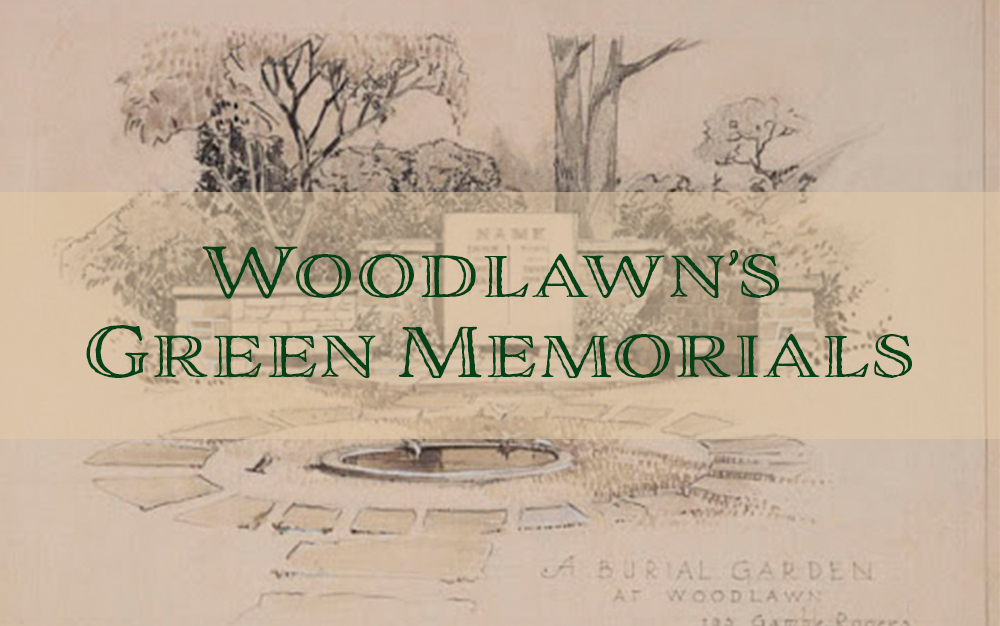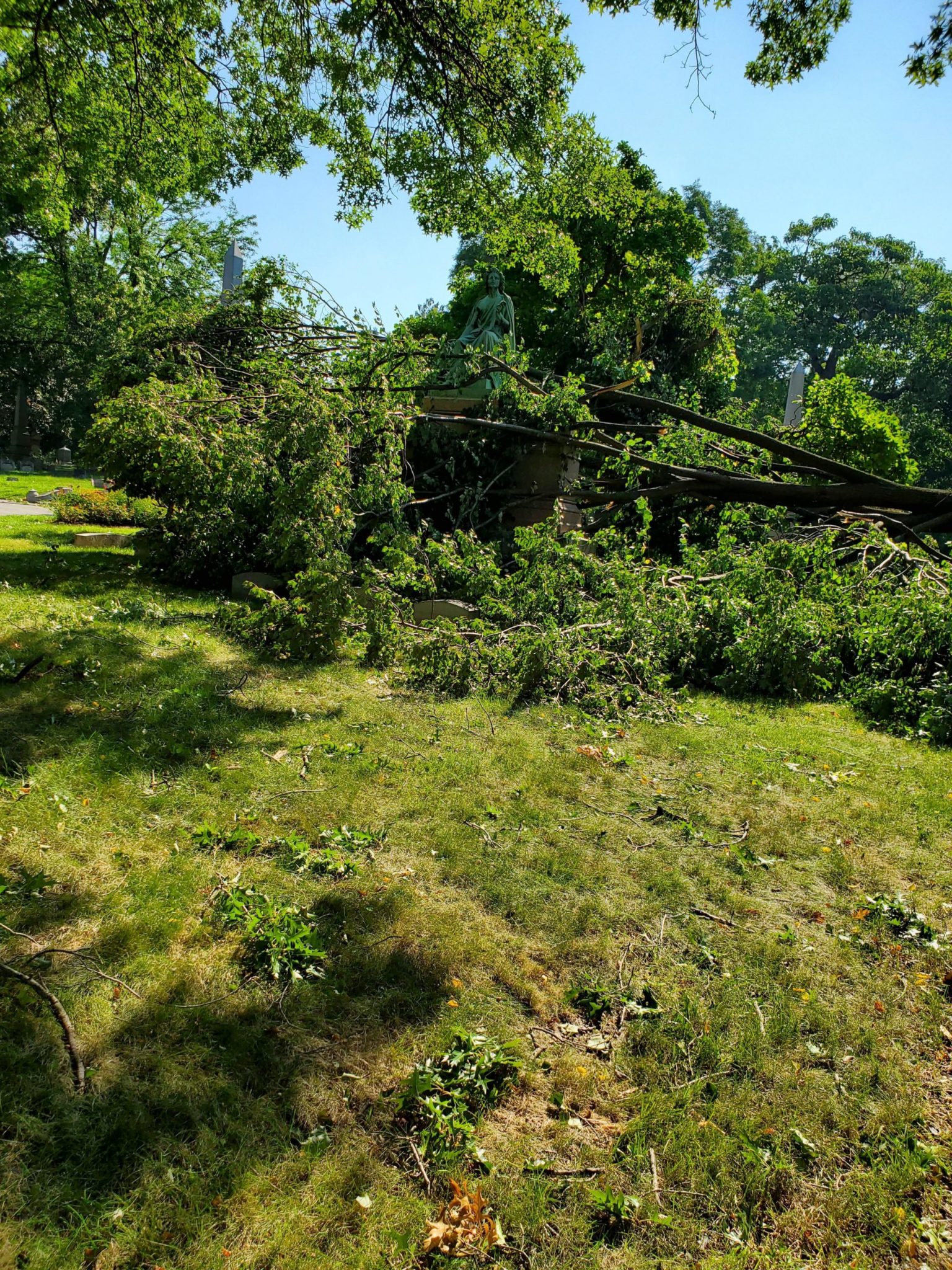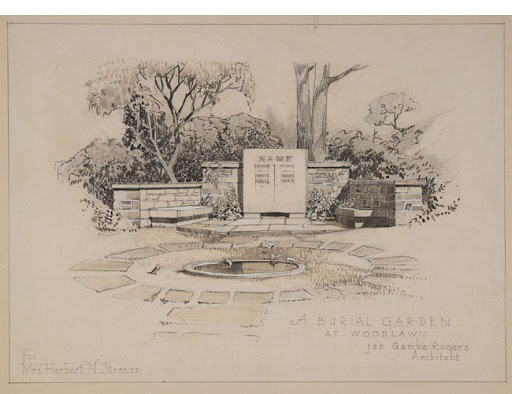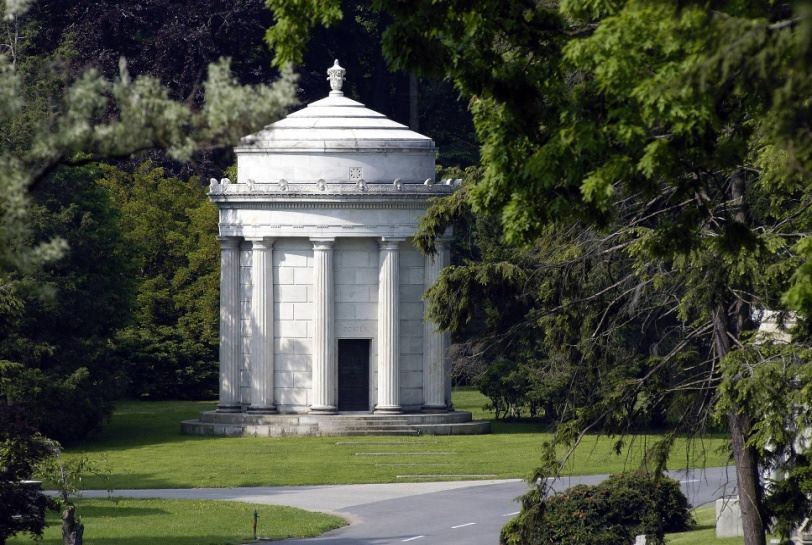
 Today, we are challenged by the clean up after hurricane winds downed and damaged many of Woodlawn’s extraordinary trees. As our arborists and grounds crew carefully lift limbs and clear roads, we are reminded at how important this collection of trees is to our Lot Owners, staff, and visitors. Not only do the plants define Woodlawn as a peaceful place, in many cases, but they also serve as the memorial to those at rest.
Today, we are challenged by the clean up after hurricane winds downed and damaged many of Woodlawn’s extraordinary trees. As our arborists and grounds crew carefully lift limbs and clear roads, we are reminded at how important this collection of trees is to our Lot Owners, staff, and visitors. Not only do the plants define Woodlawn as a peaceful place, in many cases, but they also serve as the memorial to those at rest.
Advertising pamphlets from the 1860s informed potential Lot Owners that one-quarter of Woodlawn 400 acres was forest, trees that were part of the farms purchased to establish the cemetery. As the cemetery developed, Henry Diering, the Superintendent, was charged with the selection and placement of trees as Plots were developed. Trained in Germany, Diering and his son Fred (who replaced his father when he retired), would select hundreds of trees annually to populate the grounds. The Dierings introduced a wide variety of large canopy and ornamental species to Woodlawn, ensuring that there would be a spectrum of colors as each season changed and an array of shapes to complement the monuments.
 The Dierings worked with the landscape designers commissioned by Lot Owners to create small estate gardens that framed mausoleums and often served as the memorial. Beatrix Jones Farrand designed a memorial garden for the Milliken family, Marion Cruger Coffin sketched out the landscape plan for her friend, architect George Post, Charles Wellford Leavitt created an elaborate garden suited to fit the Egyptian mausoleum of Jules Bache. In the early part of the twentieth century, Woodlawn’s Board of Trustees hired well-known arborist and author J.J. Levison (Studies of Trees, 1914) to recommend species and locations for additional trees. The semi-circles of Hemlocks that showcase several of Woodlawn’s more prominent lots, many located at major crossroads were proposed by Levison.
The Dierings worked with the landscape designers commissioned by Lot Owners to create small estate gardens that framed mausoleums and often served as the memorial. Beatrix Jones Farrand designed a memorial garden for the Milliken family, Marion Cruger Coffin sketched out the landscape plan for her friend, architect George Post, Charles Wellford Leavitt created an elaborate garden suited to fit the Egyptian mausoleum of Jules Bache. In the early part of the twentieth century, Woodlawn’s Board of Trustees hired well-known arborist and author J.J. Levison (Studies of Trees, 1914) to recommend species and locations for additional trees. The semi-circles of Hemlocks that showcase several of Woodlawn’s more prominent lots, many located at major crossroads were proposed by Levison.
 As the collection matured and the urban forest was thinned, Woodlawn looked for ways to preserve the green space. The “Million Trees NYC” project provided over 450 new trees contributing to landscape while adding to the diversity of plant types. Hornbeams dot the fence line, a variety of dogwoods, redbuds, and other ornamental trees replaced those that aged out, and large canopy trees such as the Princeton Elms were planted where disease-resistant strains were removed. Many of the original landscape plans and details are archived at Columbia University, enabling our grounds crew to “put back” the designs proposed when the cemetery was initially developed.
As the collection matured and the urban forest was thinned, Woodlawn looked for ways to preserve the green space. The “Million Trees NYC” project provided over 450 new trees contributing to landscape while adding to the diversity of plant types. Hornbeams dot the fence line, a variety of dogwoods, redbuds, and other ornamental trees replaced those that aged out, and large canopy trees such as the Princeton Elms were planted where disease-resistant strains were removed. Many of the original landscape plans and details are archived at Columbia University, enabling our grounds crew to “put back” the designs proposed when the cemetery was initially developed.
Despite losing trees that contribute to our Arboretum status and those that are meaningful to Lot Owners, we stay positive. In September, we will refresh the forest with new young trees that replace what we’ve lost and add to Woodlawn’s beauty. Many of the trees will be planted by the eager crew of Interns that are enrolled in our first Bridge to Crafts Careers – Landscape Restoration Program Cohort. Modeled after our masonry restoration initiative, our 30 Interns will be introduced and trained for Green Careers at Woodlawn this fall. This program is funded in part by the World Monuments Fund and the New York City Department of Youth and Community Development Advance and Earn program. Through a generous grant from the Ingalls Foundation, the Conservancy will be able to purchase trees for planting some to fill voids and others to diversify the collection.
Although we are discouraged today, we know support is always there. As a community, we will find a way to preserve and protect a special place that means so much to so many.
To learn more about the Woodlawn Landscape Restoration Program, click here.
